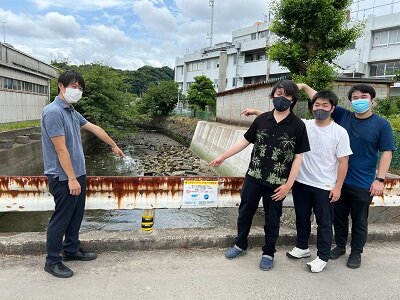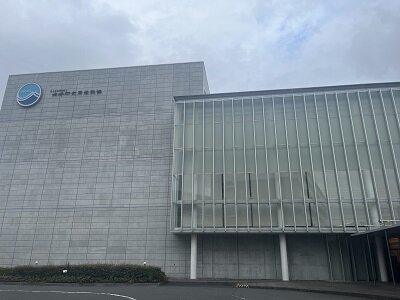ACTIVITYActivity reports
- HOME
- Activity reports
- Report on Completion of Internship at WISE Program Partner Institute JAMSTEC (HARADA, Course of Marine Resources and Environment)
Report on Completion of Internship at WISE Program Partner Institute JAMSTEC
(HARADA, Course of Marine Resources and Environment)
During my internship, I was involved in a part of the project "Development of Automatic Detection and Quantification Methods of Coastal Debris Using AI Technology". Currently, garbage such as plastic bottles and Styrofoam that is dumped into the ocean is becoming a problem, but there is not much knowledge about when, where, how much, and how much of this marine debris collects along the coast. We will first develop a method to automatically quantify the type and amount of marine debris using a deep learning method called semantic segmentation by capturing images of coastal debris with a fixed-point camera, and eventually, using the AI technology developed as described above and an observation camera with IoT functionality, we will be able to detect debris in real time and quantify the degree of pollution. The goal of this project was to achieve real-time detection of litter and quantification of the degree of contamination. I developed a web application integrating deep learning in this project, and I feel that I was entrusted with an important part of the first stage of this project, because by making it into a web application, the deep learning model created can be made available to many people and can create social value. We also went outdoors once to set up a fixed-point camera to acquire data.
 (Images from the installation of a fixed-point camera)
(Images from the installation of a fixed-point camera)
(The Right end:HARADA)
In our work, we mainly performed API development, front-end development, and execution environment creation. First, for the API development work, we created a simple sample API using the framework fastAPI during the first week, and then did an outline design of the API. This internship was a very good experience for me because I was able to do everything from design to coding, from upstream to downstream, by myself with the assistance of the person in charge. Basically, I had been entrusted with downstream coding for most of my previous internships, so this was my first time to design, and I keenly felt the importance and difficulty of design. I had also personally created a segmentation model for Unet before my internship, and for this web application, I integrated the deep learning model I had created into the backend to support asynchronous operations.
Next, we used React for front-end development. Although still simple at the beginning of the front side, by designing the screen and organizing the policies, we were able to conduct subsequent development in a short period of time.
Finally, Singurarity and Vagrant were used to create the execution environment. Since this internship was basically conducted remotely, I was working on a Mac Book Pro, but a Linux environment was needed to use Singularity, a Docker-like containerization tool, so I used Vagrant, a tool that makes it easy to create a virtual environment. This was the first time for me to use Singularity in this internship, and I personally found it very easy to use and thought that I would use it in the future. I was able to use Singularity for the first time during this internship, and I personally found it very easy to use and would like to use it in the future.
One day before the last day of the internship, we presented the results of the internship and received feedback on the internship. When I was told that this internship would be the first stepping stone for many people to know about and use the marine litter project, I realized the scale of the project and felt happy to have been involved in the first step of the project.
 (Images of JAMSTEC Institute for Earth Science)
(Images of JAMSTEC Institute for Earth Science)
During this internship, I was able to help with part of the coastal litter project. At first, I thought I would be doing tasks such as investigating deep learning models and verifying their accuracy, so I was somewhat surprised when I heard that I would be developing a web application, but now that I have finished, I feel that it was an important task that created social value by turning deep learning into an application, rather than ending with a notebook. Now that it is over, I feel that it was an important task to create social value by turning it into an app, rather than just a notebook. I myself have implemented deep learning models in notebooks before, but I had never integrated the deep learning part as a web app. Finally, I would like to thank my instructor for his great help over the past month. Thank you very much.
HARADA, 2nd year student, Course of Marine Resources and Environment

